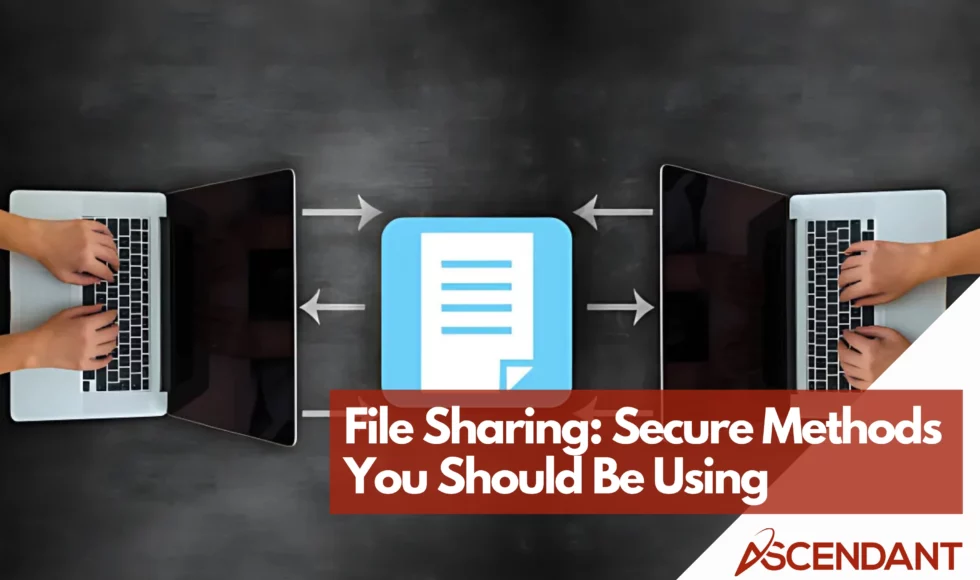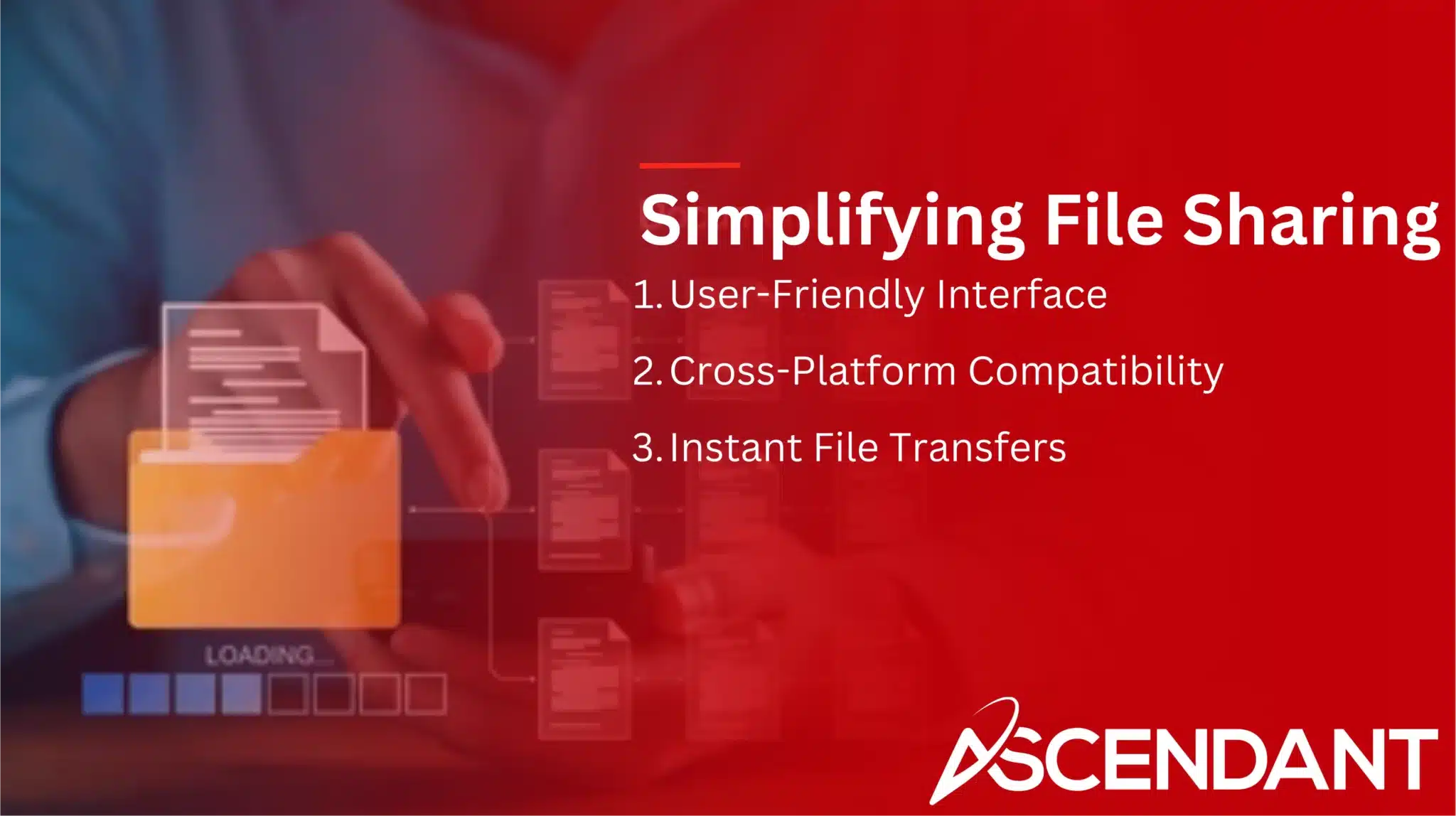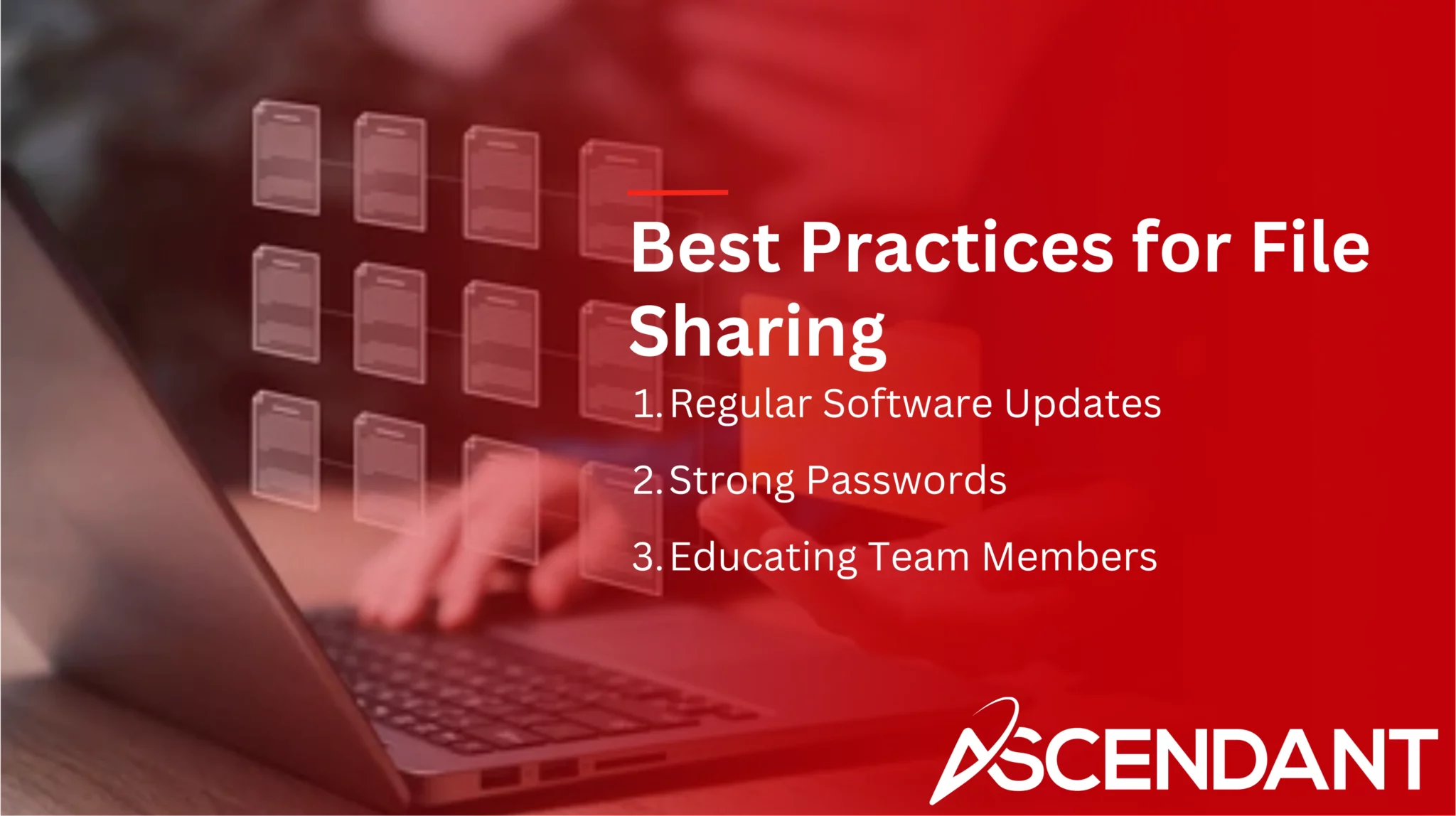Need to send files securely and easily? File sharing lets you do just that. This article reviews top file-sharing services, focusing on security, ease of use, and collaboration tools.
In This Article:
- Secure File Sharing Solutions
- Simplifying File Sharing
- Enhancing Collaboration Through File Sharing
- Advanced Features in File Sharing Platforms
- Integrations with Other Tools
- Best Practices for Secure File Sharing
- How to Choose the Right File Sharing Platform
Key Takeaways
- Secure file sharing solutions prioritize data protection through methods such as end-to-end encryption, adherence to privacy policies, and compliance with data protection laws.
- User-friendly interfaces and cross-platform compatibility simplify file sharing, enabling seamless access and collaboration among teams.
- When selecting a file-sharing platform, consider security features, scalability, and quality customer support to ensure effective and secure operations.
Secure File Sharing Solutions
Protecting files during transmission is a top priority. It’s essential that your data remains protected against unauthorized breaches when using file-sharing platforms. These services typically employ sophisticated security measures such as encryption and safe transfer protocols to uphold the integrity of your data. Services like WeTransfer, for instance, implement encryption throughout their process to ensure that sending files is both secure and reliable.
The incorporation of encryption plays a vital role in bolstering the safety of files being shared by restricting access solely to those with authorization. This allows individuals to send files swiftly while still maintaining robust protection over their sensitive information.
Today’s file-sharing solutions must strike an important balance between rapidity and security—two key aspects critical for any platform aiming to facilitate efficient yet secure data exchange.
End-to-End Encryption
End-to-end encryption safeguards files by encrypting connections, thus preserving the security of data while it’s being transmitted. This level of protection is especially vital for sensitive materials to thwart any unauthorized access during both transmission and when stored. Varied file-sharing services provide distinct degrees of encryption, making it crucial to select a service that adequately secures your information.
Ensure that a platform incorporates encryption methods for files not just in transit, but also when they are at rest. Services deploying strong encryption standards, exemplified by WeTransfer, which utilizes TLS protocol for file uploads and AES-256 bit encryption for storage, offer superior levels of security. Such measures guarantee continuous protection for your files from start to finish.
Privacy Policies
In today’s digital era, protecting user privacy is of utmost importance when it comes to sharing files. Platforms dedicated to preserving privacy refrain from selling or distributing user information, thus upholding security and gaining the trust of their users.
Take WeTransfer as an example. This platform maintains a firm stance on not trading user data with external parties, which enhances the protection of users’ privacy. To keep your data secure and integrity intact, opt for a file-sharing service that boasts strong privacy policies.
Compliance with Data Protection Laws
Adhering to data protection legislation is a key element in maintaining the security of shared files. Security features provided by platforms include encryption, two-factor authentication, and compliance with data privacy standards.
Choosing a file-sharing solution that conforms to rigorous EU data protection regulations like the GDPR guarantees that your sensitive information is managed with utmost security. This adherence ensures responsible and secure processing of your data on these compliant platforms.
Simplifying File Sharing
Maintaining top-notch security is essential when sharing files, yet it’s equally critical to ensure the process remains uncomplicated. Easy-to-use platforms foster quicker acceptance and diminish the need for extensive training, streamlining file sharing for all users. Selecting an ideal file-sharing platform necessitates a thorough assessment of its ease of use, compatibility with various systems, and robust security measures. Efficiently exchanging files enhances communication and teamwork amongst colleagues, which is especially vital in settings where remote work has become commonplace.
WeTransfer offers a hassle-free method to transmit sizable files securely without mandating user registration for its basic functions—this feature eases the task considerably. Numerous services seamlessly integrate with well-known cloud storage solutions to grant more straightforward access to files from different devices. Such attributes render file sharing not only secure, but also effortless and effective.
User-Friendly Interfaces
Platforms for sharing files have embraced user-friendly interfaces, which allow users of all skill levels to easily utilize the services. By focusing on straightforward design elements, these platforms permit even those without deep technical knowledge to smoothly execute file-related tasks such as uploading and distributing content, thus improving the experience for every user.
The emphasis on intuitive usability minimizes the requirement for in-depth instruction or training, providing a smooth process that enables effortless file sharing across diverse user groups.
Cross-Platform Compatibility
Effective file-sharing services offer support for multiple devices and operating systems, guaranteeing seamless access and transfer of files across platforms. This cross-platform compatibility removes technical obstacles, enabling users to share files effortlessly regardless of the device they use, thereby improving versatility and enhancing the overall user experience.
Instant File Transfers
Modern file-sharing platforms provide the benefit of immediate file transfers, with user-friendly interfaces that simplify the process for rapid and effective sending of files. The support for cloud integration offered by many platforms Improves the convenience and velocity at which files can be transferred.
It is critical to perform these swift transfers over secure connections in order to prevent security breaches. By merging quick transfer capabilities with robust security measures, a reliable connection is established ensuring that file sharing is both expedient and secure.
Enhancing Collaboration Through File Sharing
File sharing goes beyond simply moving files around. It significantly boosts collaboration and productivity. Contemporary tools designed for file sharing simplify the process of exchanging documents and media, allowing for effortless uploads and transfers of files on a global scale. By promoting effective file sharing, teams are empowered to collaborate seamlessly across distances. Such solutions gather file access in one place, granting secure collaborative efforts from various locations or devices.
Premier services dedicated to file sharing incorporate features that bolster both teamwork and oversight capabilities. They often integrate with external applications, enhancing their utility by connecting them with task management systems and communication platforms. Hence, file-sharing is transformed into an influential tool for cooperative work rather than just a means for transferring files.
Real-Time Editing
The ability to edit in real-time enhances the productivity of a team. Such tools that support concurrent modifications by multiple users can greatly improve both collaboration and efficiency levels. An illustration of this is Google Docs, which permits several users to alter documents at the same time while immediately showing those alterations.
Having this functionality guarantees that every member of the team has updated information, thus improving total productivity.
Shared Workspaces
Organized collaboration thrives in shared workspaces, as they serve as a hub for all project-related files and resources. These spaces foster better teamwork by integrating features such as document editing, task management, and communication tools.
By congregating project files within these centralized shared workspaces, the process of collaborating is simplified and the management of projects becomes more efficient.
Version Control
Version control plays an essential role in documenting modifications and preserving a transparent history of a project. By chronicling every alteration, version control systems allow teams to go back to earlier iterations and uphold uniformity. This functionality is vital for averting mistakes and guarantees that team members are working cohesively, which is fundamental for effective collaboration.
Advanced Features in File Sharing Platforms
File-sharing platforms with advanced capabilities improve both usability and security measures. Top-tier providers typically allow for tailored permission settings, allowing individuals to dictate who is permitted to view, alter, or add commentary to shared files. The ability to withdraw access rights and monitor guest activity tightens governance over the dissemination of data. This guarantees that only authorized personnel have access to pertinent files.
The importance of comprehensive encryption methods, adjustable user permissions, and adherence to data privacy standards cannot be overstated when selecting a file-sharing service. Services like WeTransfer safeguard your information during transmission and while stored by implementing stringent protocols such as TLS (Transport Layer Security) and AES-256 encryption. These provisions ensure the protection of your data from inception until deletion.
Customizable Permissions
Users have the capability to tailor permissions, granting varying degrees of access for files that are shared. By doing so, they can meticulously manage who has the authority to view, modify or provide feedback on documents, thus safeguarding confidential information. Fine-tuning these sharing options furnishes users with enhanced security and adaptability according to their specific requirements.
In environments where collaboration is key and team members require diverse levels of access to various project-related files, this feature becomes particularly advantageous.
Expiration Dates for Shared Links
By implementing expiration dates for shared links, users can regulate the length of time access is granted. Numerous platforms provide the option to designate an end date, which results in automatic revocation of access once that period elapses. Consequently, this limits file exposure and diminishes the chances of unauthorized individuals gaining entry.
Employing expiration dates grants users authority over when a file remains available, thus improving security measures surrounding said files.
Two-Factor Authentication
Incorporating two-factor authentication (2FA) drastically diminishes the likelihood of unauthorized entry by necessitating an additional verification step, like a code dispatched to a mobile phone, on top of the usual password.
By adopting 2FA, an added protective barrier is established which confirms that only those with permission are able to reach shared files. This is crucial for protecting confidential data within platforms designed for file-sharing.
Integrations with Other Tools
Integrations with tools are essential for boosting efficiency and simplifying processes. A multitude of file-sharing services integrate smoothly with diverse productivity applications, enabling users to handle their tasks with greater effectiveness. Such integrations markedly enhance the user experience by offering a unified space where all required tools are interlinked.
Frequently, task management utilities, messaging applications, and cloud storage options are connected to file-sharing platforms. This link expands the capabilities of file-sharing systems, enhancing their versatility and potency. Utilizing these integrated solutions leads to a workflow that is significantly more productive and streamlined.
Integration with Cloud Storage
Modern file-sharing services boast a key benefit with their ability to integrate seamlessly with cloud storage systems. These platforms often include synchronization functions that enable users to upload files straight into cloud storage, ensuring both secure and dependable backup options.
By syncing documents with cloud-based solutions such as Google Drive, individuals gain the advantage of accessing their files on any device, which significantly improves versatility and ease of use.
Third-Party App Integrations
Incorporating third-party applications into file-sharing platforms significantly enriches the user experience by providing valuable additional features. Such integrations facilitate a tailored approach to customization, aligning with individual workflow requirements and expanding the capabilities of their file-sharing systems. This connection to outside apps allows users to streamline their workflows, thereby elevating efficiency and bolstering collaboration in sharing files.
API Access
Businesses aiming to develop custom integrations that meet their unique operational requirements find API access indispensable. File-sharing platforms, by offering API access, enable developers to craft personalized integrations suited to individual business needs. Such adaptability permits businesses to refine their workflows and upgrade user experiences through the creation of bespoke solutions tailored specifically for them.
Best Practices for Secure File Sharing
Ensuring the security of file sharing is vital to minimizing the chances of data breaches and unauthorized access incidents. Adhering to secure practices helps guarantee that files are safeguarded from their creation until their final use. Key elements such as frequent software updates, employing strong passwords, and providing education for team members form an essential part of a comprehensive security plan.
It’s imperative to keep software current in order to tackle potential vulnerabilities and maintain a high level of file security. Continuous updates serve as a defense against emerging threats that could be exploited by malicious actors. Crafting complex and distinctive passwords is crucial for preventing unwanted account intrusions.
By educating users about trusted methods of secure file sharing, it becomes possible to significantly diminish the risks associated with human errors while optimizing efficiency and saving valuable time.
Regular Software Updates
It is essential to maintain the latest versions of file-sharing programs and associated applications in order to mitigate security risks. Updating software routinely fortifies defenses against emerging threats that malicious entities might leverage.
Users can bolster their overall data protection and diminish the chances of unauthorized access by consistently keeping their software current with the most recent updates.
Strong Passwords
Employing intricate and distinctive passwords is crucial for protecting accounts against unpermitted entry. A robust password ought to have a minimum length of 12 characters and should incorporate a mix of letters, numerals, and special characters to render it challenging to decipher.
By adopting practices that involve the use of strong passwords, users can substantially improve the protection surrounding their accounts. This step serves as an effective measure in securing confidential data from being accessed without authorization.
Educating Team Members
It is critical to minimize operational risks by instructing team members on the importance of secure file-sharing practices. When users are well-versed in proper protocols and best practices, the likelihood of security breaches due to human error is greatly diminished. Creating an atmosphere where security consciousness is ingrained allows organizations to have all their team members play a role in upholding a safe environment for sharing files.
How to Choose the Right File Sharing Platform
When selecting an appropriate platform for file-sharing, it is vital to evaluate aspects such as security features, the capability to scale and the level of customer support provided. Securing data through a trusted service with robust security protocols is paramount. Opting for platforms that prioritize security measures like end-to-end encryption and two-factor authentication can offer superior protection for confidential information. Adherence to both regional and global regulations on data protection confirms responsible and secure handling of your information.
The ability to scale effectively should not be overlooked when choosing a file-sharing system. Businesses must choose options that can handle growth seamlessly while managing larger volumes of data without interruption. Quality customer support stands equally important in swiftly addressing any complications that arise, ensuring minimal downtime during crucial business operations. File-sharing services offering extensive assistance—including around the clock availability and multiple channels for help—provide users with timely assistance whenever necessary.
Assessing Security Features
Protecting files during transmission is paramount in any file-sharing system, and end-to-end encryption plays a vital role in shielding these files from unsanctioned access. Users are empowered to define the extent of accessibility through customizable permissions, thus ensuring that only approved personnel can either view or alter the content.
Security is reinforced by employing features like shared link expiration dates, which automatically nullify access after a set timeframe. The implementation of two-factor authentication provides an additional layer of defense by necessitating extra confirmation before allowing entry into the system. Keeping software up-to-date along with utilizing strong and distinct passwords are crucial measures for safeguarding against security breaches and unauthorized entries.
Imparting knowledge on secure file-sharing protocols amongst team members is essential for reducing risks associated with day-to-day operations.
Scalability and Flexibility
When selecting a platform for file sharing, it’s crucial to consider both scalability and flexibility. A scalable solution is one that can expand in accordance with your business growth, handling larger volumes of data seamlessly. The chosen platform ought to offer enough flexibility to conform readily to changing business requirements without presenting major challenges.
Opting for a file-sharing system that possesses the ability to adjust its storage capabilities dynamically allows companies to maintain an efficient and effective operation as their need for data management escalates.
Customer Support
Providing top-notch customer support is essential for swift and efficient issue resolution. Platforms that deliver thorough support services, such as round-the-clock availability and multiple avenues for help, guarantee users obtain the necessary assistance without delay. High-quality support aids in tackling user issues swiftly and promotes seamless use of the platform, thereby reducing interruption during pivotal tasks.
Clients who opt for a platform equipped with strong customer service can significantly improve their experience by ensuring that any challenges they encounter are dealt with quickly.
Summary
In essence, selecting an appropriate file-sharing service is crucial for facilitating secure, straightforward, and swift transfers of files. The implementation of security measures such as end-to-end encryption, adjustable permissions settings, and two-factor authentication plays a pivotal role in the safeguarding of confidential data. Adherence to privacy regulations and conformity with laws concerning data protection Bolster the safety measures ensuring responsible handling of user information. Ease-of-use driven by intuitive interfaces that are compatible across multiple platforms paired with immediate transfer capabilities make sharing files effortless and universally accessible.
The enhancement of cooperative endeavors is yet another advantage offered by contemporary file-sharing systems which feature capabilities like real-time modifications to documents, communal work environments and tracking document revisions through version control mechanisms. Advanced options including customizable access permissions along with setting expiration dates on shared link resources contribute additional layers of security while also offering more control over content distribution flexibility. Integration facilities that connect seamlessly into cloud storage services or other external applications significantly increase efficiency levels thereby optimizing overall workflow processes. To diminish potential threats effectively, it’s recommended to adopt best practices related to secure file sharing such as consistently updating software programs coupled with the creation/use of robust passwords ensuring consistent protective custody over any shared digital contents. Finally, when determining which platform might be most suitable one must contemplate its specific security offerings scaling possibilities alongside evaluating available customer support provisions.
Frequently Asked Questions
What is the most secure file sharing?
The most secure file sharing services are those that use encryption by default, such as Dropbox, Google Drive, and Microsoft OneDrive for Business.
These platforms ensure enhanced security for your information and files.
Is Google file sharing free?
Yes, Google Drive file sharing is free, allowing you to convert and share numerous files without any cost.
However, access to advanced features, such as link analytics, requires creating an account with a third-party service.
How do I turn on file sharing?
Navigate to the Control Panel and select “View network status and tasks.” From there, choose “Change advanced settings” in order to activate file and printer sharing.
For optimal operation, also verify that network discovery is enabled.
Why is end-to-end encryption important in file sharing?
Ensuring a high degree of security, end-to-end encryption is vital when sharing files because it secures the files against unauthorized access throughout their transmission and while they are stored.
As a result, this method plays an essential role in shielding confidential information from possible security breaches.
How do privacy policies affect file sharing platforms?
The way in which file sharing platforms administer user data is greatly influenced by their privacy policies, especially when they prioritize privacy and choose not to sell information to outside parties.
As a result, the level of trust users place in these platforms and the overall credibility of the platform can be affected by such policies.




